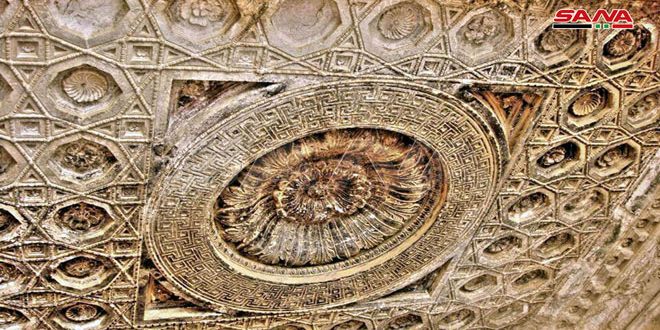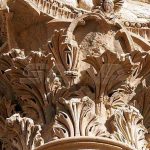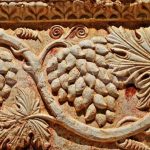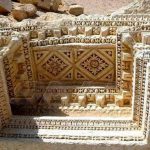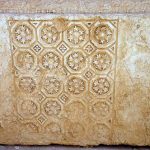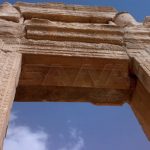Palmyra, SANA- The Palmyrene sculpting on plaster was a predominant and auxiliary art used as an additional aesthetic element in the roofs of the buildings and the tomb façades in Palmyra, where contemporary archaeological finds of decorative stucco sculptures have demonstrated the uniqueness of Palmyrene art in making plaster through burning the limestone.
Director of Palmyra Tourism Department, researcher Jamil Omar al-Qayyim, told SANA correspondent that the most prominent type of sculpting which was adopted by the Palmyrene artists in the ancient times is what is now called “Relief” where the artist sculpts the shapes on the plaster which is fixed on a wall or ceiling and uses a method to add and find more visible projections.
Relief is a sculptural technique where the sculpted elements remain attached to a solid background of the same material. The term relief is from the Latin verb relevo, to raise. To create a sculpture in relief is to give the impression that the sculpted material has been raised above the background plane. What is actually performed when a relief is cut in from a flat surface of stone (relief sculpture) is a lowering of the field, leaving the unsculpted parts seemingly raised.
Al-Qayyim added that the plaster is not resistant to humidity as most stucco decorations were lost at the Palmyrene houses, noting that these decorations include wall friezes, paintings, decorations, façade arches, windows, doors, and ceilings, as well as statues reflecting the genius Palmyrene art which used to be up to the level of the Greek art.
Al-Qayyim reviewed some of these works, including a frieze portrait depicting a bird eating pomegranate seeds and showing the skill of the sculptor who sculpted them directly on the plaster. The frieze includes tongues which symbolize wisdom for the Greeks and eggs which symbolize renewal and continuity of life
The Palmyrene artist used a precise geometrical design based on dividing the surfaces into units of equal length and width by using squares and then using the dividers to draw intersecting circles that were the basis for drawing adjacent octagons.
The Palmyrene artist mastered the exploitation of the resulting space between the octagons by drawing squares inside which are four-leaf flowers as this work was carried out according to a geometrical plan delicately drawn on papyrus and then it was enlarged using the grid of squares, which is a method adopted in all civilizations and we find many patterns and shapes of them in the Palmyrene tombs.
Al-Qayyim added that the Palmyrene artist had a great fondness in the past in sculpting the vine leaf, branches, and clusters, as he mastered its sculptures and made many models and shapes that decorated the façades of arches, entrances, windows, and doors.
Al-Qayyim considers that the plaster Palmyra sculptures were the result of the cultural interaction between Palmyra and the cultural centers around the world in the framework of the artistic influences of other cultures with a focus on the principle of originality, which is one of the main characteristics of the Syrian civilization in general.
Ruaa al-Jazaeri
 Syrian Arab News Agency S A N A
Syrian Arab News Agency S A N A
